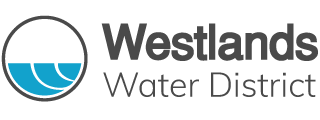State Water Board Proposal and its Implications on Water Providers, Farms, and Communities
Early last month the staff of the State Water Resources Control Board (SWRCB), the agency that is responsible for ensuring waters of the state are put to beneficial use to the fullest extent of which they are capable, released a plan that if adopted will have farreaching negative impacts on California communities and farms. Those familiar with water issues in California understand that much of the water delivered to farms and communities throughout the state originates in areas tributary to the Delta. A portion of these waters are diverted upstream of the Delta and a portion is then pumped via the Harvey O. Banks and C.W. “Bill” Jones Pumping Plants to supply water for cities, towns, and farms throughout the San Joaquin Valley and Southern California. Still, a large portion of this water flows out to the ocean.
Specifically, the SWRCB is in the process of updating the Water Control Plan for the San Francisco Bay/Sacramento-San Joaquin Delta Estuary, also known as the Bay-Delta Plan. The Update is divided into phases: Phase 1 directly impacts the lower San Joaquin, Stanislaus, Tuolumne and Merced rivers; and Phase 2 directly impacts the Sacramento River and its tributaries. The foundational element of the SWRCB staff’s proposal for Phase 1 and Phase 2 is increased flows, which the staff proposes through what is called “unimpaired flows.” The final draft of Phase 1 was released in early July; the draft of Phase 2 is forthcoming.
Unimpaired flows is a hypothetical, calculated figure representing a river’s flow that would occur with some but not all anthropogenic changes to watersheds and water courses. Unimpaired flows assumes rivers are without dams but with levees and other changes to the river channels.
Phase 1 focuses on the lower San Joaquin River and its tributaries. Through Phase 1, SWRCB staff proposes that the SWRCB establishes a target of 40% unimpaired flow, within the range of 30 to 50%. According to the SWRCB staff, this would result in up to a 23% water supply loss for cities and families.
The Framework document for Phase 2 focuses on the Bay-Delta, Sacramento River and its tributaries. At this point, SWRCB staff proposes a target of 55% unimpaired flow, within the range of 35 to 75% as indicated in the Scientific Basis Report. According to the SWRCB staff, this would result in up to a 26% water supply loss for cities and families.
The impact of the proposed update cannot be understated. The loss of this water will negatively affect working families. Just as we saw in California’s latest drought, the health of local businesses and the number of available jobs is directly correlated with the availability of water which sustains the local ag economy. As the SWRCB places additional limits on water supply available to the San Joaquin Valley, shuttered businesses and the loss of thousands of jobs will be unavoidable.
The purpose of the proposed update is ostensibly to protect the overall health of the Delta which we can all agree is in a perilous state. However, the “flowonly” approach the SWRCB staff has proposed ignores recommendations from the Delta Stewardship Council and other experts encouraging the development of a comprehensive approach that is built upon scientific criteria that achieve desired ecological outcomes. Interestingly, the SWRCB has actually acknowledged that there are multiple factors contributing to the decline in fish populations. But, instead of adopting a holistic approach, which takes all the contributing factors into account, the SWRCB staff opted for this flow-only approach.
Key to the SWRCB’s mission is “to adopt plans that ensure beneficial uses in an area are protected.” This includes the protection of municipal, industrial, and agricultural users. However, the approach recommended by SWRCB staff for Phase 1 and Phase 2 ignores expert recommendations and rewrites decades of bi-partisan support for policies that would improve water supply for Californians while also protecting the environment.
As California looks for long-term solutions to its water supply, the flow-only approach recommended by SWRCB staff would create more problems which puts families, farms and communities in jeopardy and does little to create a sustainable tomorrow, let alone a healthy Delta.
Westlands Water Quality Coalition
(WWQC) – Member Submittals
Upper Zone Wells Needed for the Groundwater Quality Trend Monitoring (No Cost) Program
Westlands Water Quality Coalition Members are needed for a newly-developed Groundwater Quality Trend Monitoring (GQTM) Program as required by the Western Tulare Lake Basin General Order R5-2014-0001 (GO).
BACKGROUND
The GQTM Program requires a network of wells (domestic, irrigation, observation, public water supply, or community water system) for water quality sampling to determine current groundwater quality conditions and to develop long-term information for evaluation of regional effects relevant to irrigated agriculture and associated practices.
HOW CAN YOU HELP?
The Coalition is actively seeking Upper Zone wells varying in depth from less than 200 feet to over 800 below ground surface for participation in the GQTM Program. This would involve minimal commitment at no cost, and
water quality constituent sampling would occur just once a year during the fall.
TO SIGN-UP
If you have an Upper Zone well that might be a candidate, or have questions about the GQTM Program, please contact Debra Dunn at 559-241-6242 or [email protected].
